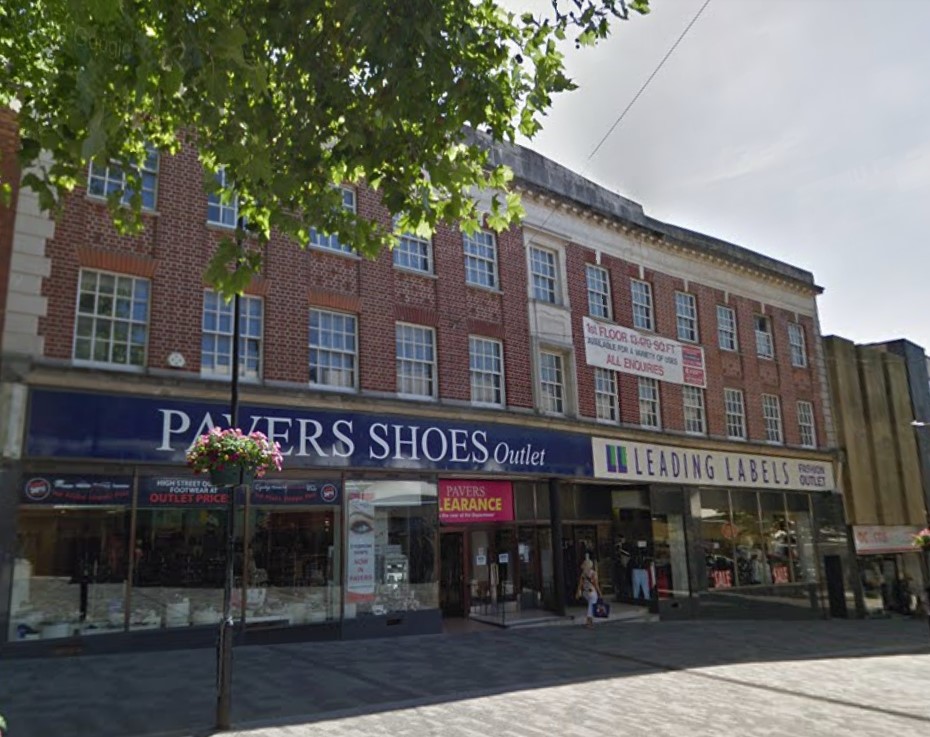In its decision in Ballcroft Estates Limited v Virk (VO) (2022) UKUT 0153 (LC) the Upper Tribunal (Lands Chamber) considered the valuation of a former Marks & Spencer store in Kidderminster and reviewed the difficulties involved with the analysis of rents in the current, poor, market conditions for large retail properties.
The appeal property was part of a former Marks & Spencer store in central Kidderminster. The appeal property comprised the basement and ground floors of the former store, which was itself a four-storey building. The property had become vacant when Marks & Spencer relocated to a new out-of-town development, and the property had been let to Pavers Ltd. The letting allowed Pavers to share up to 50% of the space with a discount retailer, Leading Labels Limited. There was also a tenancy at will to another retailer. The lease was of the entire building, but Pavers occupied only the ground and first floors.
The assessment of the ground and first floors (the appeal hereditament occupied by Pavers) was rateable value £92,000. The landlord of the property (which was responsible for rates under the terms of the lease to Pavers) appealed against this figure to the Valuation Tribunal for England, which determined reduced assessment of rateable value £57,000. The landlord appealed further to the Upper Tribunal against that decision.
Before the Upper Tribunal, the landlord presented an analysis of the rent of the appeal building (only part of which formed the appeal hereditament) and contended that, after adjustment for the landlord’s liability for rates and insurance, the rent was negative and the rating assessment should be reduced to a nominal figure. The respondent valuation officer attached little weight to the letting of the appeal property, contending that too many adjustments were required to allow this to be considered as reliable rental evidence.
Both parties referred to three lettings of other large retail properties in central Kidderminster. The first of these was the letting of a store formerly occupied by Boots, to 99p stores. This letting incorporated a service charge cap, a “rent exclusivity reduction”, and a rent review cap. The appellant considered that, after adjustment for these factors, the rent under this lease was a negative figure. The respondent made no adjustment for the rent review cap, nor for the rent exclusivity reduction, and, after adjustment for the service charge cap, considered that the rent represented a value of £24.61 per square metre.
The second letting incorporated a rent-free period (15 months), and a dilapidations waiver. The parties agreed that the rent-free period should be allowed for on a straight-line basis, but could not agree on adjustment for the dilapidations waiver. The appellant allowed for a sum equivalent to the landlord’s dilapidations claim, adjusted on a straight-line basis over the term of the lease. This adjustment produced a negative rental value. The respondent made no allowance for the dilapidations waiver and analysed the rent to a figure of £26.25 per square metre.
The third property referred to was a smaller one, which both parties acknowledged had been valued on a zoning basis, but nevertheless presented analyses on an overall basis. This letting incorporated a rent-free period, and the tenant was a charity which would benefit from 80% charitable rates relief. In analysing the rent, the appellant adjusted for both factors to produce a net rent which analysed to £4.89 p per square metre. The respondent adjusted for the rent-free period, but not for the charitable rate relief, which produced an analysis of £30.30 p per square metre overall.
Both parties also referred to two freehold sales of large retail properties, but acknowledged that these were of limited assistance.
The appellant’s expert considered that the correct assessment was rateable value £1. The respondent Valuation Officer’s expert initially produced a valuation of rateable value £52,000, based on a value of £38 per square metre, but this was later adjusted to rateable value £45,000 (£30 per square metre), and finally to rateable value rateable value £37,500.
The Tribunal found the letting of the appeal building to be of limited significance, because it was common ground that the upper floors, which were included in the letting but not in the appeal hereditament, were of very limited value, and because of the other adjustments required. The Tribunal’s own analysis of this letting produced a net rental figure of approximately £6,500. However, the Tribunal was sceptical of the usefulness of this analysis.
Instead, the Tribunal looked to the other lettings referred to by the parties, and carried out its own analyses of these lettings. These revised analyses produced positive net rent figures for the three properties analysing, respectively, to £11.75 per square metre for the first of the comparables, £11 per square metre for the second, and £15 per square metre for the (smaller) third property. The Tribunal found the freehold sales evidence to be of no assistance.
The Tribunal’s decision recognised the scarcity of evidence in the appeal, and the complications of analysing that which was available. Finding the deconstruction of the headline rent of the appeal building not to be persuasive, the Tribunal relied upon its own alternative analyses of the other comparables to arrive at a value of £11 per square metre, and determined a rateable value of £17,750 with effect from 1 April 2017.
The Tribunal’s decision in this case may well be regarded as a taste of things to come. The valuation date for the forthcoming 2023 rating lists was 1 April 2021, which represented a very difficult time in the letting market for large retail units. The result is that many of the transactions around that time may well contain the sorts of complications shown in the evidence in this case – such as fully inclusive rents, exclusivity clauses, dilapidations waivers, and other adjustments. Valuers dealing with large retail properties will find the Tribunal’s approach to these matters in this case of assistance in the future.

